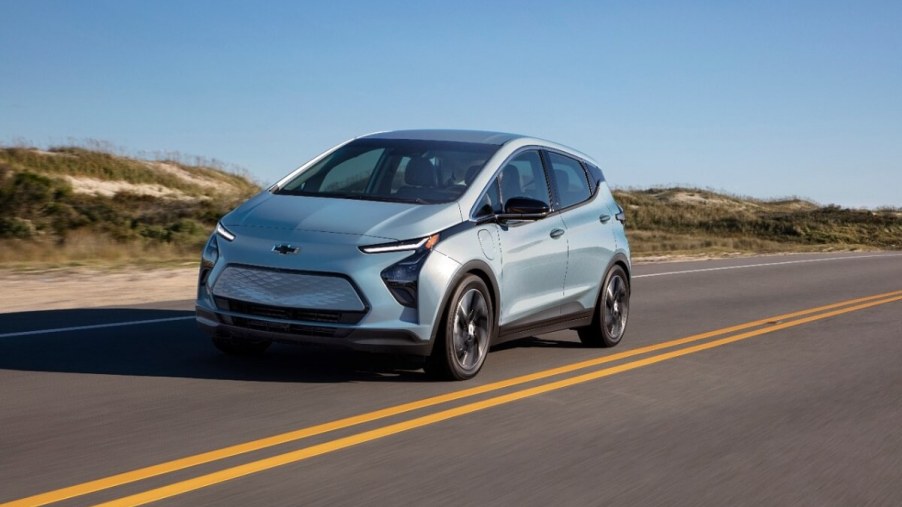
Breaking Down GM’s 4-Prong Plan to Go Green
General Motors (GM) has set an ambitious goal of selling one million electric vehicles (EVs) in North America by 2025. The Detroit-based automaker also intends to eliminate tailpipe emissions from all new light-duty vehicles sold in the U.S. by 2035, hoping to achieve carbon neutrality in all global operations and products by 2040.
GM has committed to embracing the vehicles of tomorrow, changing the way it sources materials and manufacturers products to attain the company’s sustainability goals. To support its vision of an all-electric future, GM has created a sustainability strategy that includes the following four steps for going green.
Here’s a quick overview of each step.
1. Growing through innovation
GM is proud of its contributions to the automotive industry. The automaker pioneered the first electric starter and developed advanced software technologies to assist drivers during an emergency with OnStar services. Continuing to innovate and push the limits of engineering, GM has developed a Ultium platform to support its EV strategy and ultimate vision of zero emissions.
Ultium is a game-changing EV platform built on a flexible battery architecture that offers outstanding range, power, and performance. The innovative energy source can power a wide range of electric vehicles, including luxury cars, light pickup trucks, SUVs, and performance cars, at multiple price points.
GM explains its innovative Ultium technology utilizes long pouch cells stacked on top of one other to optimize energy density and improve range. The battery options scale between 50 and 200 kWh, with a “GM-estimated range of 300 miles or more on a full charge.”
Remember, the actual range will vary for each vehicle based on factors such as battery age, loading, terrain, temperature, use, and maintenance.
2. Taking environmental action
As GM advances toward an all-electric future, it is embracing environmental, social, and governance (ESG) principles to establish a collaborative and sustainable supply chain. To reach its goal of carbon neutrality by 2040, GM has made it a priority to manufacture a wide range of EVs by implementing improved sustainable procurement practices, an all-inclusive social responsibility program, and ambitious climate goals.
According to the U.S. Environmental Protection Agency (EPA), the automaker has developed three main strategies to reduce its carbon footprint. The first step is to conserve raw materials by increasing its use of recycled-content materials to manufacture products more efficiently.
The second step involves waste management, where the automaker works with manufacturers, designers, suppliers, and waste haulers to encourage the practice of “Reduce, Reuse, Recycle,” utilizing salvage and disposal methods that are environmentally friendly.
Lastly, GM is working toward reducing its dependence on natural energy resources to power its plants, using alternative forms of cleaner, greener energy.
3. Everybody in
GM understands it can’t transition to an all-electric fleet without the help and support of the community, its workforce, and its customer base.
For instance, the automaker recently joined forces with Tesla to build more EV charging stations across the country, saying it’s not about the competition but rather the convenience for its customers to create a more “sustainable journey.”
As part of its sustainability strategy, GM states, “We are on a path to prove that technology and collaboration, driven by purpose, can help change the world.”
4. Driving responsible governance
GM strives to lead with integrity as it works toward building an all-electric future to benefit its customers and the global environment. The automaker wants to drive “impactful change by bringing EVs, mobility and connectivity to the next level.”
To achieve its goal of sustainability, GM has implemented various policies and processes to “help guide responsible, ethical action.”


